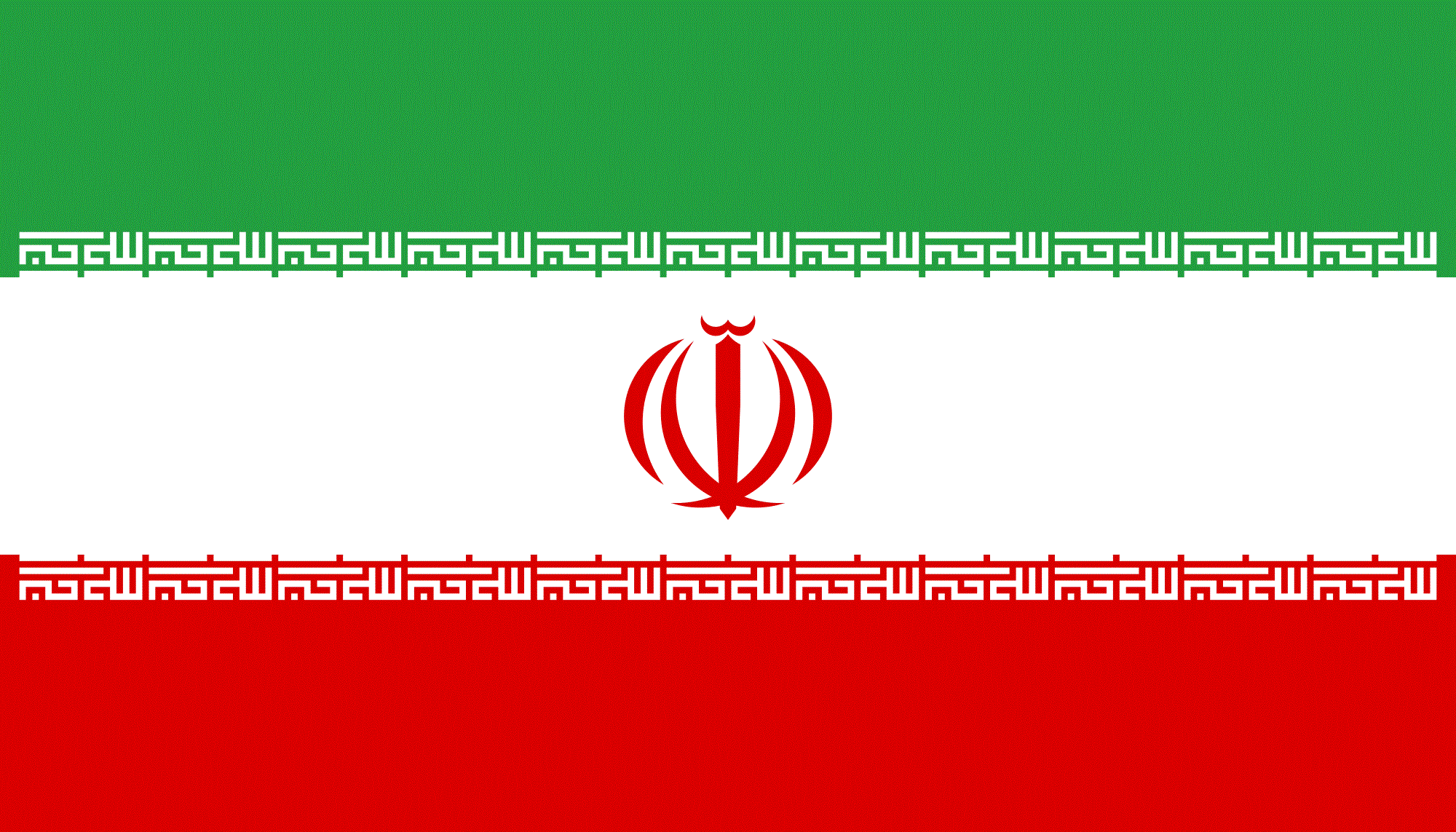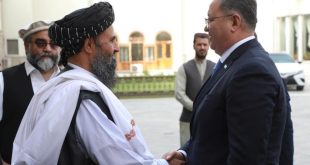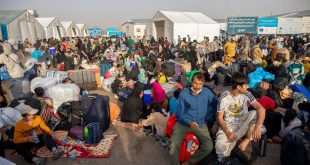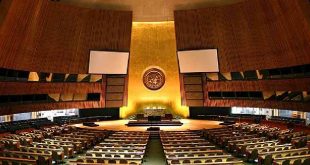By Rabbani Feroz
Al Qaeda’s second-highest leader, accused of being one of the masterminds of the deadly 1998 attacks on American embassies in Africa, was killed in Iran three months ago, which has been confirmed by intelligence officials. United States accused Iran of providing new terrorist base for Al-Qaida. After 9/11 incident, most of al-Qaida operatives along its leaders fleet to Iran. Their living in Iran was surprising, given that Iran and al-Qaeda are bitter enemies. Iran, a Shiite Muslim theocracy, and a-Qaeda, a Sunni
Muslim jihadist group, have fought each other on the battlefields of Iraq and other places for many years.
– Existence of al-Qaeda in Iran
Abdullah Ahmed Abdullah, alias, Abu Muhammad al-Masri the second leader of al-Qaida after Ayman Al-Zawahiri, was gunned down on the streets of Tehran by two assassins on a motorcycle on Aug. 7, the anniversary of the embassy attacks. He was killed along with his daughter, Miriam, the widow of Osama bin Laden’s son Hamza bin Laden.
Israeli agents shot Abu Muhammad al-Masri on the streets of Tehran at the behest of the U.S., officials said, neither Iran, al-Qaeda or nor the U.S., Israel — has publicly acknowledged the killing, but according to four of the officials, the United States, has been tracking the movements of Mr. al-Masri and other Qaeda operatives in Iran for years. The F.B.I. offered a $10 million reward for information leading to his capture. American intelligence officials say that al-Masri has been in Iran since 2003, living freely in the Pasdaran district of Tehran, an upscale suburb.
According to a highly classified document produced by the U.S. National Counterterrorism Center in 2008, Mr. al-Masri was the “most experienced and capable operational planner.” The document described him as the “former chief of training” who “worked closely” with Saif al-Adl another al-Qaida top military commander.
Al-Masri mentored Hamza bin Laden, according to terrorism experts. Hamza bin laden later married Mr. al-Masri’s daughter, Miriam who has been killed with al- masri in Tehran.
Abu al-Khayr al-Masri is another al-Qaida’s top leader who has been given permeation to stay in Iran in 2015, and was killed by a US. Drone strike in Syria in 2017.
Hamza and other members of the Bin Laden family were living in Iran. “They believed the United States would find it very difficult to act against them there,” an expert said. “Also because they believed that the chances of the Iranian regime doing an exchange deal with the Americans that would include their heads were very slim.”
According to one of the intelligence officials, the al-Qaida top commanders continued to live in Tehran, under the protection of the Revolutionary Guards and later the Ministry of Intelligence and Security. Later, they were allowed to travel abroad and did, mainly to Afghanistan, Pakistan and Syria.
Recently Mike Pompeo, former secretary of U.S. claimed that Iran is providing terrorist groups safe havens, he said “al masri was al-Qaida’s worldwide number two, and on the FBI’s Most Wanted List for slaughtering members of our State Department family in the Kenya and Tanzania bombings of 1998. More than 200 people, including 12 Americans, lost their lives in those attacks. He also stated al-Qaida has a new home base: “it is the Islamic Republic of Iran.”
American counterterrorism officials believe Iran may have allowed them to stay to run operations against the United States, a common adversary. It would not be the first time that Iran had joined forces with Sunni militants, having supported Hamas, Palestinian Islamic Jihad and the Taliban.
– How Iran established a relationship with al-Qaeda
Al-Qaida has, in fact, carried on a relationship with Tehran for nearly three decades, as the 9/11 Commission clearly established. In the early ’90s, al-Qaida operatives traveled to Iran and the Bekaa Valley of Lebanon – the heartland of Hezbollah – for explosives training.
In the period before 9/11, the Iranian regime told border inspectors not to stamp al-Qaida members’ passports when they entered or left Iran on their way to or from Afghanistan. This was to help them avoid suspicion when they returned to their home countries. And while there’s no evidence Iran helped plan or had foreknowledge of the 9/11 attacks, experts believed” at least eight of the 9/11 hijackers traveled through Iran between October of 2000 and February of 2001. In fact, in 2011, a federal judge in New York ruled that Iran had provided support for the 9/11 attacks, based on the role it played in furthering al-Qaida operatives’ plans.
A letter from bin Laden, found by the US. Army during the Abbottabad raid in Pakistan, sums up the relationship since 9/11 very well: In his own words, quote, “Iran is our main artery for funds, personnel, and communication…There is no need to fight with Iran unless you are forced to.” These are Bin Laden’s own words about his and al-Qaida’s relationship with the Islamic Republic of Iran.
Iran arrests students, religious minorities, and environmentalists, but not Jihadist al-Qaida and Taliban killers. Iran decided to allow al-Qaida to establish a new operational headquarters, on the condition that al-Qaida operatives abide by the regimes rules governing al-Qaida’s stay inside the country.
The Iranian Ministry of Intelligence and Security and the IRGC have provided safe havens and logistical support – things like travel documents, ID cards, passports – that enable al-Qaida activity. As a result of this assistance, al-Qaida has centralized its leadership inside of Tehran. Ayman al-Zawahiri’s deputies were there and, living a normal al-Qaida life. The ground for to fundraise, to freely communicate with al-Qaida members around the world, and to perform many other functions that were previously directed from Afghanistan or Pakistan is being paved. This axis poses a grave threat to security of nations and to the American homeland itself. Unlike in Afghanistan, when al-Qaida was hiding in the mountains, al-Qaida today is operating underneath the hard shell of the Iranian regime’s protection.
Republican US Senator Lindsey Graham said Iran has become a “safe haven” for al-Qaeda terrorist group and its regime was the “architect” of the September 11, 2001, attacks on the United States.
“The Iranian regime is the largest state sponsor of terrorism and they have become a safe haven for al-Qaeda, the architects of 9/11,” Graham said on Twitter.
Tensions between Washington and Tehran, which have been increasing since 2018 when Trump unilaterally withdrew from Iran’s 2015 nuclear deal, reached historic heights last January when the US killed Soleimani, the former commander of the Quds Force, the overseas arm of Iran’s Revolutionary Guards Corps (IRGC).
– How al-Qaeda enters Afghanistan from Iran?
According to U.N. monitors, Iran allowed the al-Qaida operatives to communicate, consult with their counterparts and the Taliban in Afghanistan.
“Al-Qaeda trained the Taliban for the talks,” said Abdul Salam Hanafi, a former Taliban governor who left the group in 2001 but remains in contact with several senior leaders.
Since the signing of the U.S.-Taliban deal, al-Qaeda has become more active in Afghanistan, communicating more frequently with Taliban leaders and traveling around the country to rally support among sympathetic local Taliban leadership, according to an Afghan security official who spoke on the condition of anonymity. Those assessments are supported by the U.N. monitoring team focusing on al-Qaeda and the Taliban group has evidence of al-Qaeda fighters training and advising the Taliban. Al-Qaeda members are often embedded in Taliban units to act as military advisers for key operations, he said.
Last month, Afghanistan’s intelligence agency (NDS) announced that a senior al-Qaeda member was killed in a Taliban-controlled district in western Afghanistan. The National Directorate of Security said in a statement that the al-Qaeda member “had close ties with the Taliban terrorist group. He helped and trained them in planting explosive materials, making car bombs and other types of makeshift mines.”
In October, the intelligence agency announced the killing of senior al-Qaeda member, Abu Muhsin al-Masri, during an operation in Taliban territory in Afghanistan’s Ghazni province whom was entered Afghanistan from Iran. Masri was on the FBI’s most-wanted list for providing material support to a foreign terrorist organization and conspiracy to kill U.S. nationals.
– Iran-al-Qaeda-Taliban relationship
One of the Taliban’s Spokesman Qari Yousef Ahmadi has confirmed that a senior delegation was under Mullah Ghani Brader political deputy of the Taliban invited by Iran to negotiate with the Iranian officials the delegation include, Sayed Taib Agha and Mohammad Ullah Nomanee, the Taliban representatives in Qatar and Shamsuddin Pahlawan respectively. And, later, a group of Taliban delegation met with Iranian Ambassador to Doha Hameed Raza Dihqani, discussing intra-Afghan negotiations.
Indeed, Iran dealt with al-Qaida and Taliban to ally them against United States and its allies [Afghanistan is one of its allies] and instead the Iran regime will provide them protection and safe haven in its soil.
– U.N. Acknowledges Iran-Al-Qaeda Relationship
In July 2018, a United Nations panel of experts found that Al- Qaeda leaders in Iran have “influenced events in the Syrian Arab Republic, countering the authority of Abu Mohammed al-Jawlani and causing formations, breakaways and mergers of various al-Qaeda-aligned groups in Adlib.” The report also specifically named al- Qaeda operatives Abu Muhammad Al-Masri and Sayf Al-Adl as key facilitators.
Conclusion
Beginning in the early 1990’s, Iran and al-Qaeda initiated their alliance against America – a partnership that would only intensify over time. Prior to the September 11 attacks, Iran, primarily through its proxy Hezbollah, provided al-Qaeda critical training, explosives and logistical support. Such support culminated in Iran facilitating the transit of some of the 9/11 hijackers through its territory.
Following the September 11 attacks, Iran portrayed itself as an enemy of al-Qaeda, but in reality, their relationship became even more deeply rooted. The Iranian regime, via the IRGC’s elite Quds Force, provided key members of al-Qaeda’s leadership safe haven in Iran to continue their terrorist operations and avoid arrest by international authorities. Some Al-Qaeda operatives continue to reside in Iran.
After, unites states announced troop withdrawal, Iran has intensify its leverage over al-Qaida and Taliban in Afghanistan to implement its agenda to make the withdrawal process swift.
Iran, like Pakistan, has sponsoring state terrorism to enhance its regional and international agenda and using terrorists as a tool for dominants.
Iran has special skills in militarizing and establishing relations with militant groups such as Hezbollah, Lashkar-e-Fatemiun and Zainabion, and uses these proxies to wage wars with the United States, and Saudi Arabia.
The writer is master on international law
The views and opinions expressed in this article is of the author and do not reflect the views or opinions of the Afghanistan Times
 Afghanistan Times
Afghanistan Times




